Broward County's first nature
center, which opened in September 1978, comprises three vegetative communities
found along and influenced by the New River: an inland freshwater cypress/maple
wetland, a pond apple/mangrove community along the river, and, farther
inland, a laurel oak hammock. The 57-acre site is now designated as
an Urban Wilderness Area. |
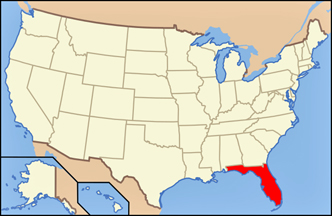
|
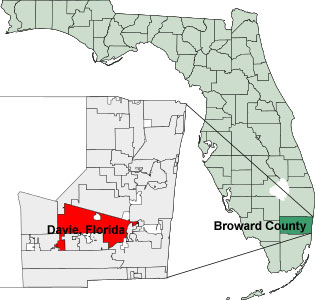
|
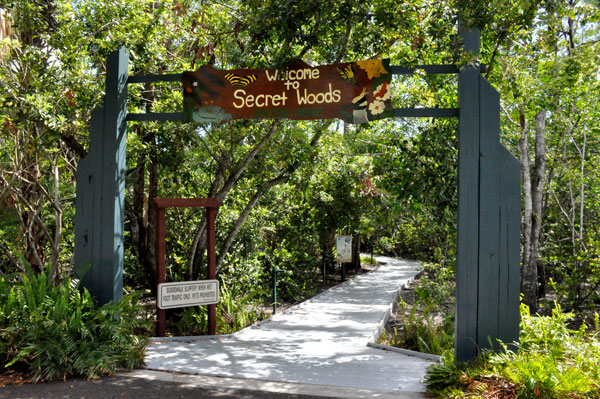 |
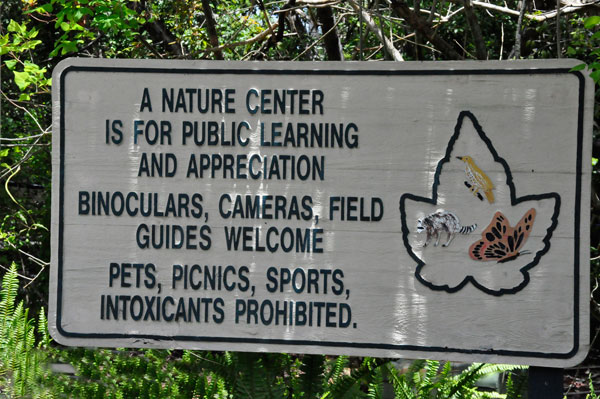 |
Buildings here include Julia
Hall, a rental facility with Wi-Fi access, plus the Monarch Interpretive
center, and the Swallowtail Classroom. No pets are allowed within the
nature center's Boundaries. The nature center is home to various forms
of wildlife. Alligators, snakes or manatees might be in the area. |
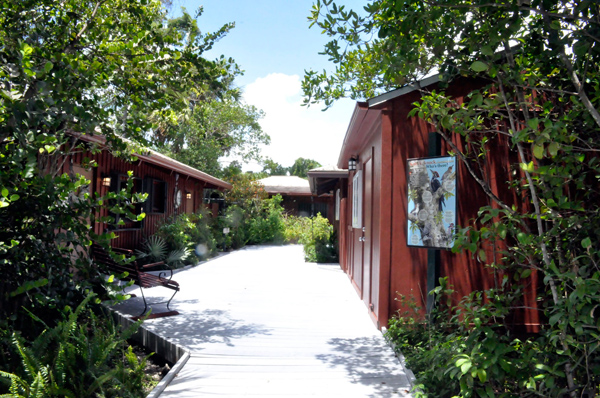 |
Karen Duquette
went to Secret Woods with her friend Jeanne Trembly. While there, Jeanne
saw a wooden box and she decided to take a rest in the box that she
thought looked like a coffin. Jeanne is always a happy, smiling person
with a very unique sense of humor. She is always fun to hang out with. |
 |
 |
New River Trail: This 3,200-foot
boardwalk trail, constructed almost entirely from recycled plastic lumber,
goes through three different ecosystems. The journey begins in a hardwood
hammock surrounded by native Florida vegetation such as laurel oak trees,
Sabal palms, white stopper, wild coffee, strangler figs, and cocoplum.
Closer to the river, there is to a tidal marsh area that is completely
under water during high tide. Leather ferns, red and white mangroves,
pond apple trees, and cypress are located in the tidal marsh area. |
|
Sometimes Manatees can be
seen swimming here, but none were seen on this date. Of course, Karen
Duquette has seen lots of Manatees because she lived in Florida for
many years, while raising teenagers and before traveling the country
in her RV. |
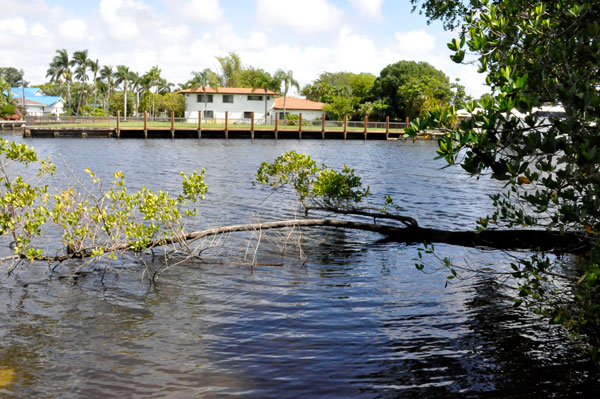 |
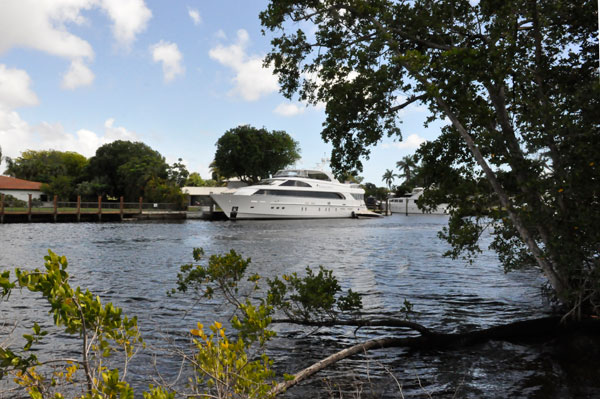 |
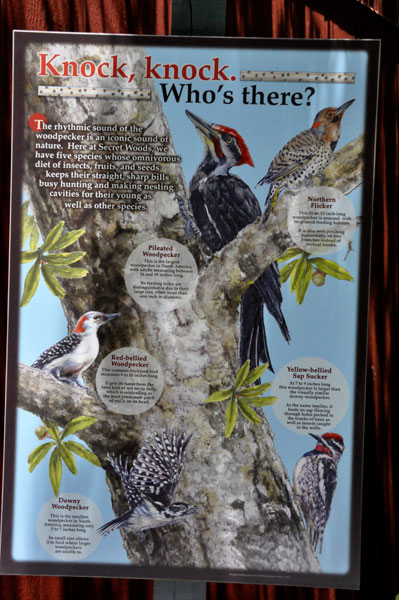 |
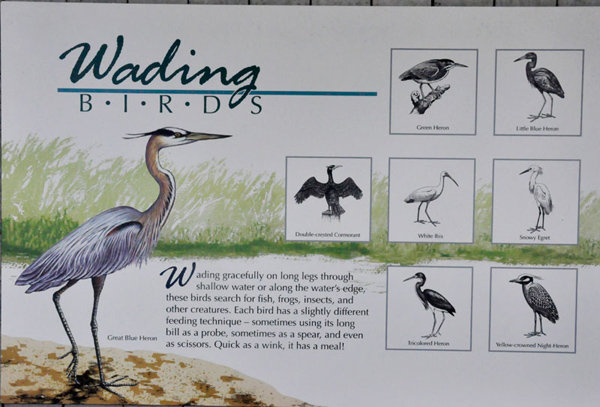 |
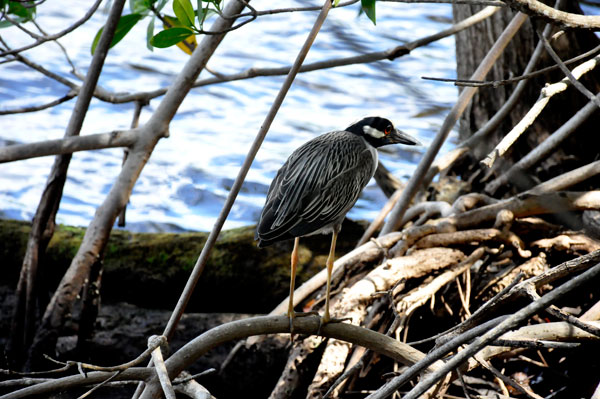 |
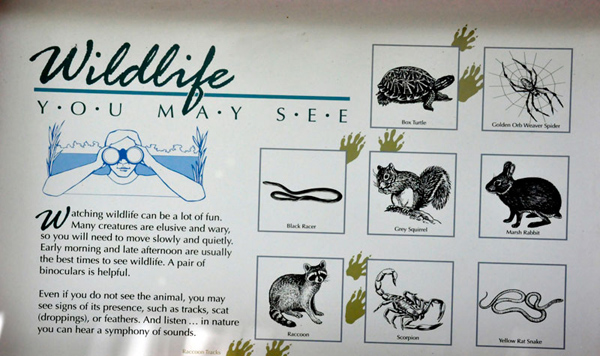 |
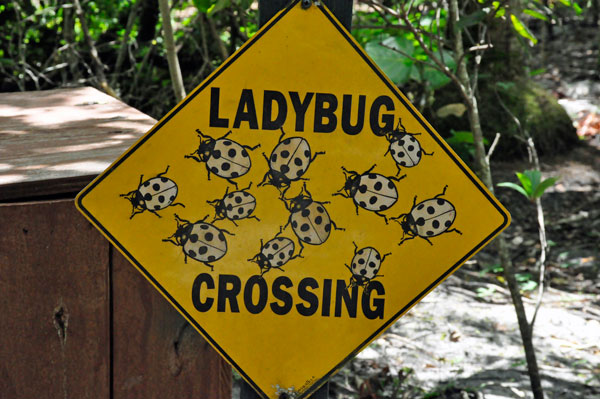 |
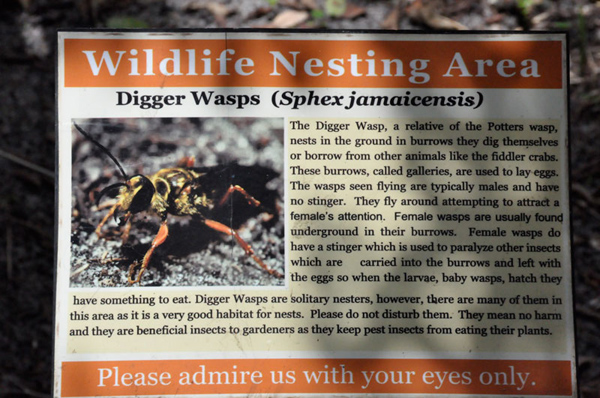 |
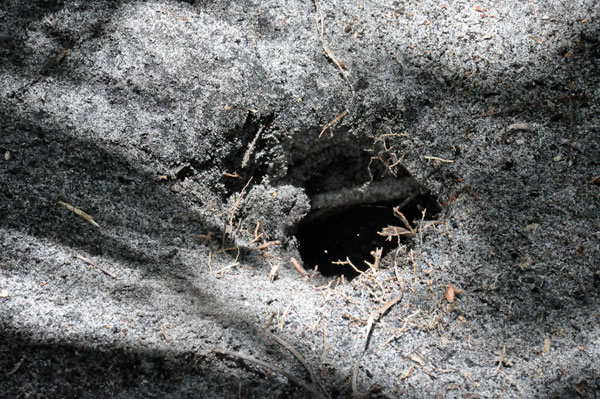 |
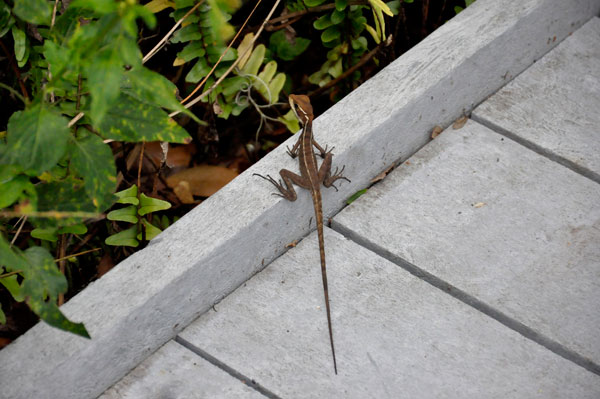 |
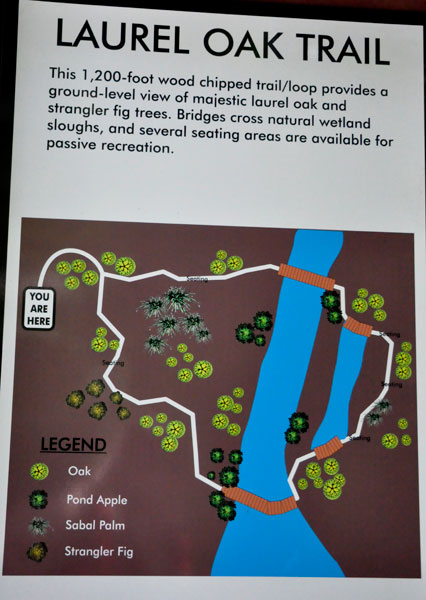 |
Laurel Oak Trail
A 1,200-foot mulched nature trail that takes you from a hardwood
hammock through a tidal marsh area and back. When you begin your walk
along the Laurel Oak Trail, you are surrounded by laurel oaks, live
oaks, Sabal palms, wild coffee, green- and red-tipped cocoplum, beauty
berry, and white stopper. As you continue down the trail, you will come
to a series of four bridges that will carry you through a tidal marsh.
There you will see leather ferns, pond apple trees, white mangroves,
and a variety of palms. You are also likely to see many birds, squirrels, crabs,
and lizards. There are several seating areas along the way. |
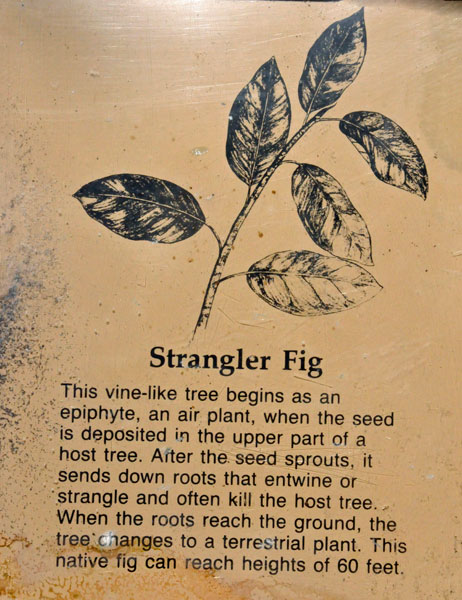 |
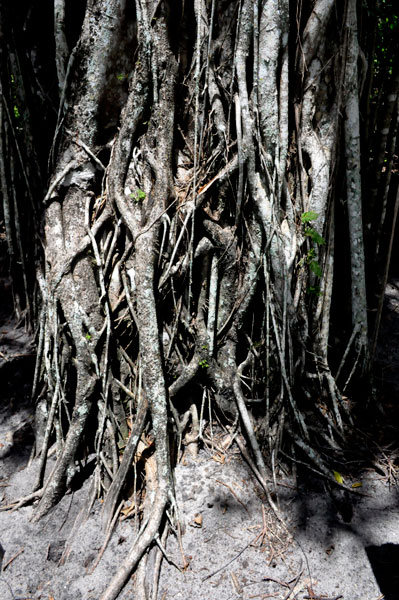 |
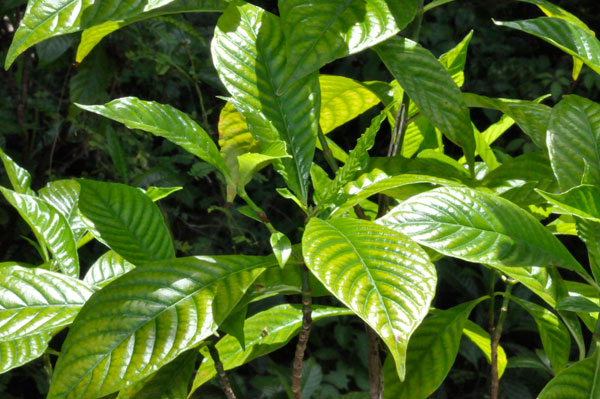 |
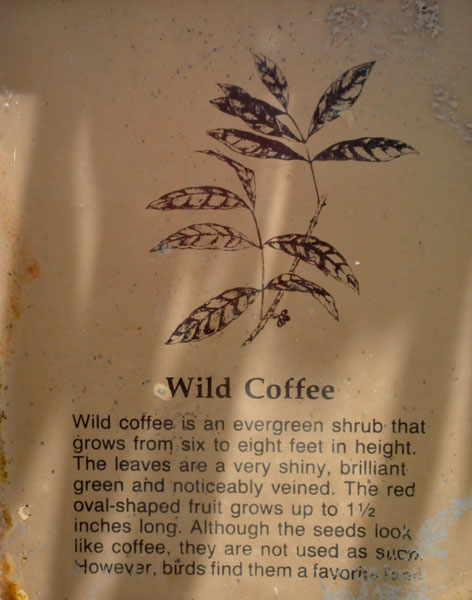 |
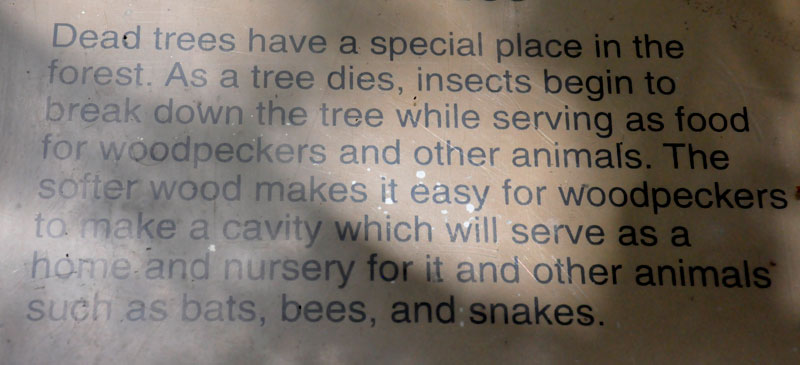 |
Butterfly Island:
A 3,800-square-foot walk-through butterfly garden where you'll
find more than 20 different species of plants that attract butterflies. A
250-foot mulched path winds through the garden and has three benches
along the way where you can sit and relax. Among the butterflies commonly
seen in the area are the monarch, zebra longwing, cloudless sulphur,
queen, gulf fritillary, giant swallowtail, and atala hairstreak. There
were not a lot of flowers blooming on this date. All of the butterflies
on this date were the same black and white ones, the Zebra Longwing,
and they seldom landed on any of the flowers. |
 |
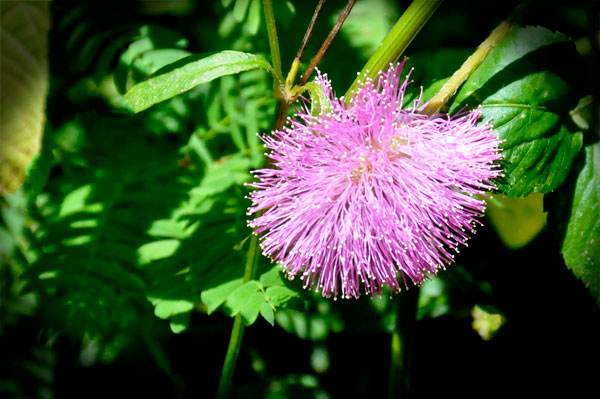 |
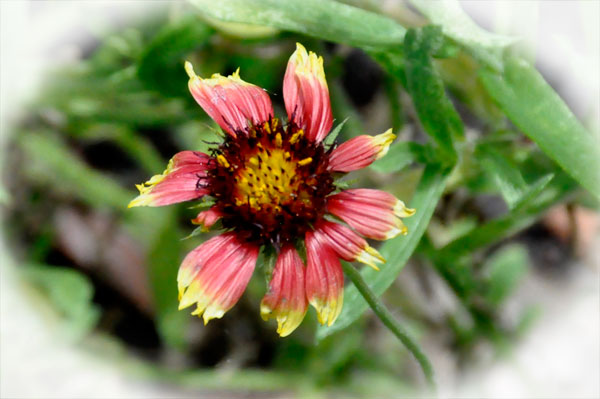 |





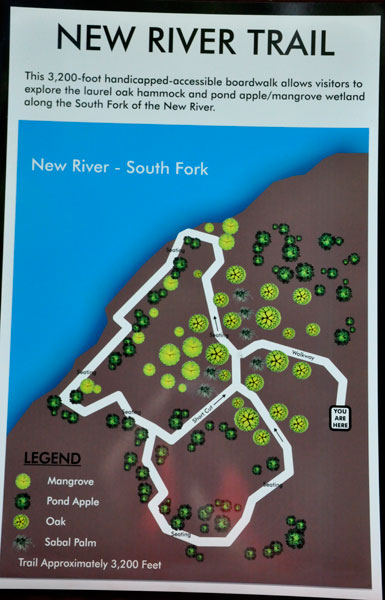






















 Continue navigation in the order of travel -
Continue navigation in the order of travel - 























